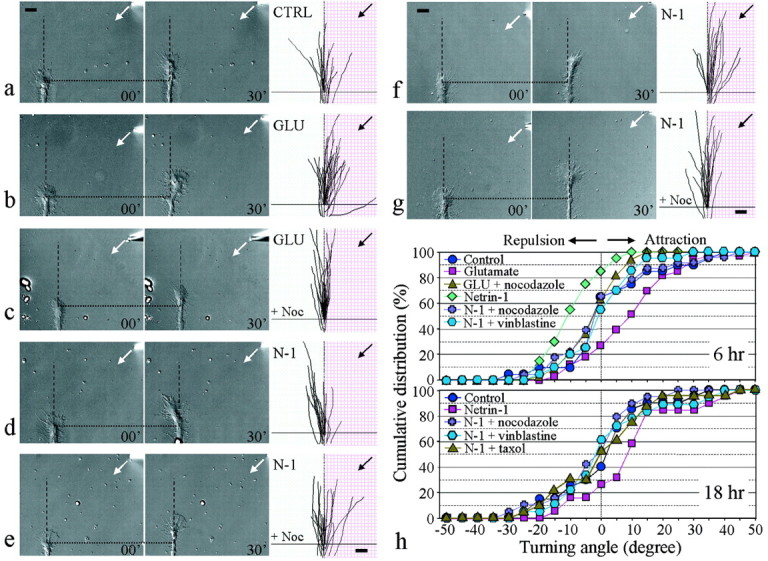Fig. 1.

Blocking of growth cone turning responses to guidance gradients by inhibition of MT dynamics. a–e, Growth cone turning induced in 6 hr cultures. A gradient of glutamate (b) or netrin-1 (d) was applied to the growth cone by repetitive pulsatile pressure ejection of either 50 μm glutamate (GLU) or 5 μg/ml netrin-1 (N-1) solution from a micropipette (see Materials and Methods). The control (a) was done with the same pulsatile pipette application of culture medium (CTRL) to the growth cone. Images of the growth cone were collected at the onset (left image) and at the end (right image) of a 30 min application period. The origin is the center of the growth cone at the onset of the experiment.Dotted lines indicate corresponding positions along the neurite; dashed lines indicate the original direction of extension. Superimposed traces on theright (same magnifications as the growth cone images) depict the trajectory of neurite extension during the 30 min period for all of the growth cones in each group. Arrows indicate the direction of the gradient. Bath application of 10 nmnocodazole (+ Noc) abolished both attraction induced by glutamate (c) and repulsion induced by netrin-1 (e). f, g, Netrin-1-induced growth cone attraction in 18 hr cultures (f) was also blocked by the presence of 10 nm nocodazole in the bath (g). Scale bars: a–g, 10 μm. h, The distribution of turning angles is presented to depict the overall responses under different experimental conditions. For each condition, the percentage value refers to the percentage of growth cones with the turning angle less than or equal to a given angular value. Data shown are turning responses induced by glutamate and netrin-1 in 6 hr (top panel) and 18 hr (bottom panel) cultures without and with the presence of the MT drugs nocodazole and vinblastine in bath.
